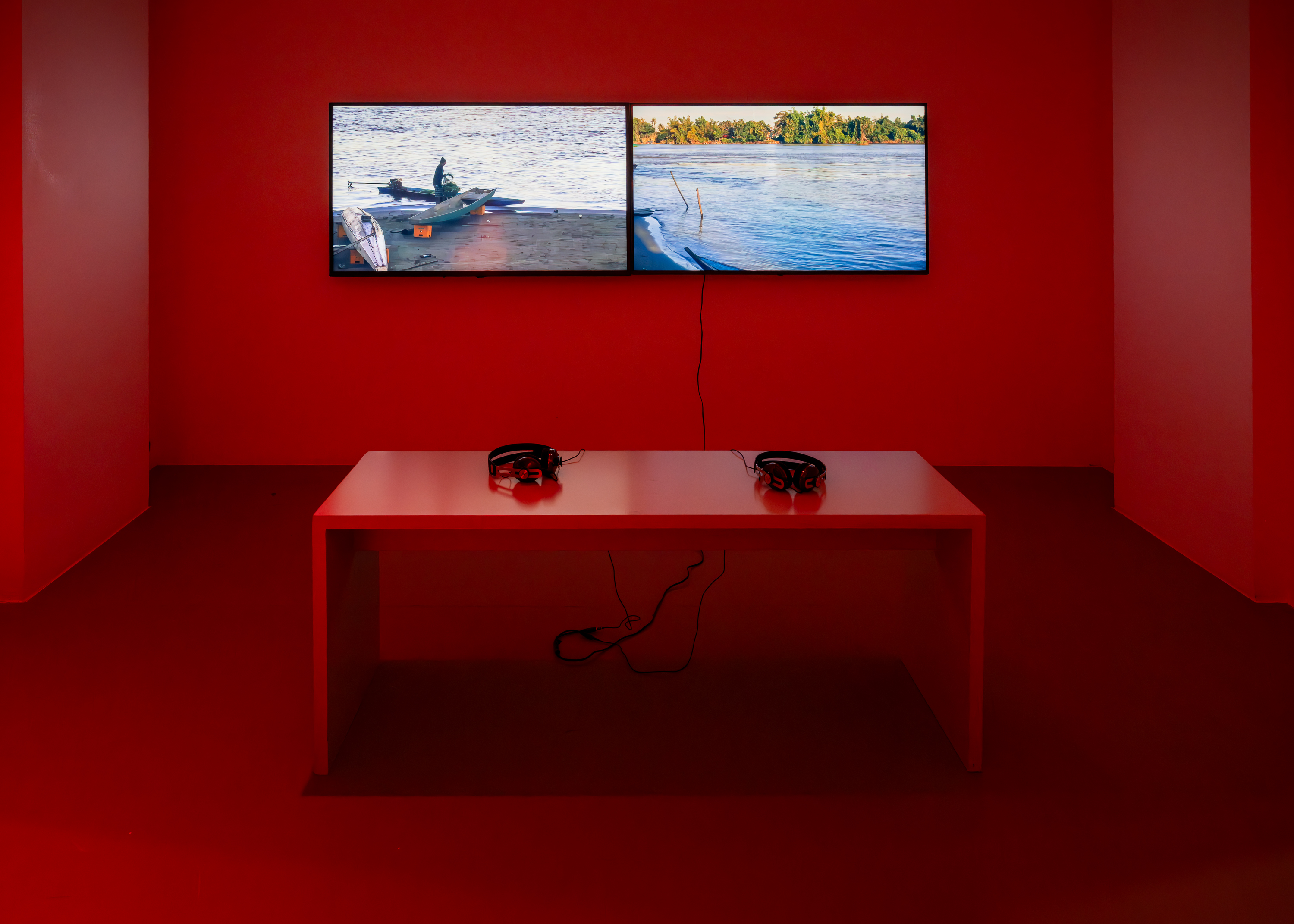Exhibition
Som Supaparinya
The Rivers They Don’t See (extended)
Aug. 16 - Nov. 16, 2025

Som Supaparinya’s first institutional solo exhibition in Germany, The Rivers They Don’t See, will be extended. As part of the new presentation, the video A Separation of Sand and Islands (2018) will be shown in place of My Grandpa’s Route Has Been Forever Blocked (2012).
The exhibition addresses rivers as politicized environmental structures deeply linked to the colonial history of Southeast Asia. Themes such as state control, capitalist expansion, and their socio-ecological impacts are explored. The central work of the exhibition is the video installation The Rivers They Don’t See (2024), which traces large-scale interventions in nature and society along the Salween, Ping, and Chao Phraya rivers — from planned river diversions to the consequences of so-called "green" energy policies. Supaparinya not only documents the river courses but also their absence: dried-up riverbeds, destroyed ecosystems, and abandoned villages. The voices of refugees from Myanmar, migrant workers, and riverbank residents give a personal dimension to the effects of political decisions.
Supaparinya's most recent work, The Unsung Lyric of Ping (2025) was created in collaboration with musician Helen Ganya. This video work shows the aftermath of Typhoon Yagi (2024) and combines natural sounds with images of destroyed landscapes to create a poetic portrait of an ecosystem in transition. Supaparinya’s artistic practice combines filmic research, documentary observation, and symbolic condensation.
The two-channel video work A Separation of Sand and Islands (2018), in which Supaparinya traces the history of 19th-century French exploratory missions in the Mekong region. Inspired by the Chiang Rai environmental activists, Supaparinya highlights the entanglement of Southeast Asia’s colonial history with current geopolitical infrastructure projects, and their connection to forced migration, ecosystem destruction, and China’s economic expansion.
Her works evolve from long-term engagements, often spanning years, without a predefined question — a process that allows for new perspectives on social inequalities, ecological destruction, and collective memory. The exhibition was specifically developed for the architecture of the Kestner Gesellschaft: Mirror installations, sound spaces, and an immersive corridor transform the rooms into an "archive of atmospheres."
Curated by: Natalie Keppler and Alexander Wilmschen
In collaboration with the DAAD Artists-in-Berlin Program
We sincerely thank the artist and her gallery VER, Bangkok.
Som Supaparinya (b. 1973 in Chiang Mai) is a multidisciplinary artist working with installation, found objects, photography, and film. Her works engage with social history, ecological and political structures, and colonial continuities in Southeast Asia. In her video works, rivers and landscapes act as silent witnesses to societal transformation. Her artistic practice is documentary, experimental, and often allegorical. Som Supaparinya lives and works in Chiang Mai.
Supaparinya is a co-founder of Chiangmai Art Conversation (CAC), a non-profit artist-led initiative. In 2025, the Kestner Gesellschaft Hannover presents her solo exhibition, The Rivers They Don’t See, co-curated by Natalie Keppler. In 2026, the collaboration will continue at the daadgalerie Berlin. Supaparinya was part of the Bangkok Art Biennale (2024), documenta 15 (2022), and the Thailand Biennale (2021) and Gwangju Biennale (2018).














Visit us
Patrons / Partners

